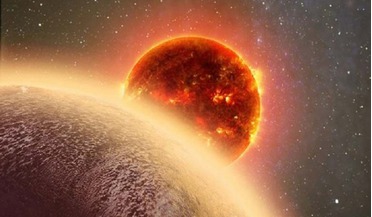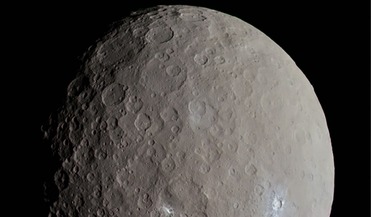 03 August 2018
Plate tectonics not needed for life, but UV light is
03 August 2018
Plate tectonics not needed for life, but UV light is
...are in fact not required. Temperatures on Earth are kept to a reasonable habitable level by the release and capture of carbon dioxide (CO2). After it is released from the ground, it is then returned to the subsurface when it has been sequestered into...
 October 2017
Colouring our view of the oceans
October 2017
Colouring our view of the oceans
... is one of the Essential Climate Variables (ECV) listed by the World Meteorological Organization (WMO). Phytoplankton pull carbon dioxide from the atmosphere for photosynthesis and a given population of phytoplankton can double its numbers in a day...
 02 January 2021
Life beneath glaciers is good news in the search for life on icy worlds
02 January 2021
Life beneath glaciers is good news in the search for life on icy worlds
... team, was that the microbial communities under the glaciers could combine that hydrogen gas with carbon dioxide to generate biomass. Biomass is biological material derived from living, or recently living organisms that can be used to generate...
 December 2014
MAVEN and the evolution of Mars
December 2014
MAVEN and the evolution of Mars
..., unlike Mercury, are far enough from the Sun to have retained at least their heavier constituents like carbon dioxide. Endeavour Crater, with Pillinger Point in the foreground, as viewed in false colour by NASA’s Mars Exploration Rover Opportunity...
 02 March 2016
Using MUSCLES to test for life on other planets
02 March 2016
Using MUSCLES to test for life on other planets
... stars. The first abiotic method identified to produce this result is when a star's ultraviolet (UV) light splits apart carbon dioxide (CO2) molecules, freeing some of the oxygen atoms to form into O2, the kind of oxygen present in Earth's atmosphere...
 November 2021
Megasatellite habitat at Ceres
November 2021
Megasatellite habitat at Ceres
... for Earth, and this makes it necessary to regulate the carbon dioxide level to prevent fluctuations. To achieve this, some biomass will...then burned cleanly at the right rate to keep the carbon dioxide level optimal for plants and people. Just as on ...